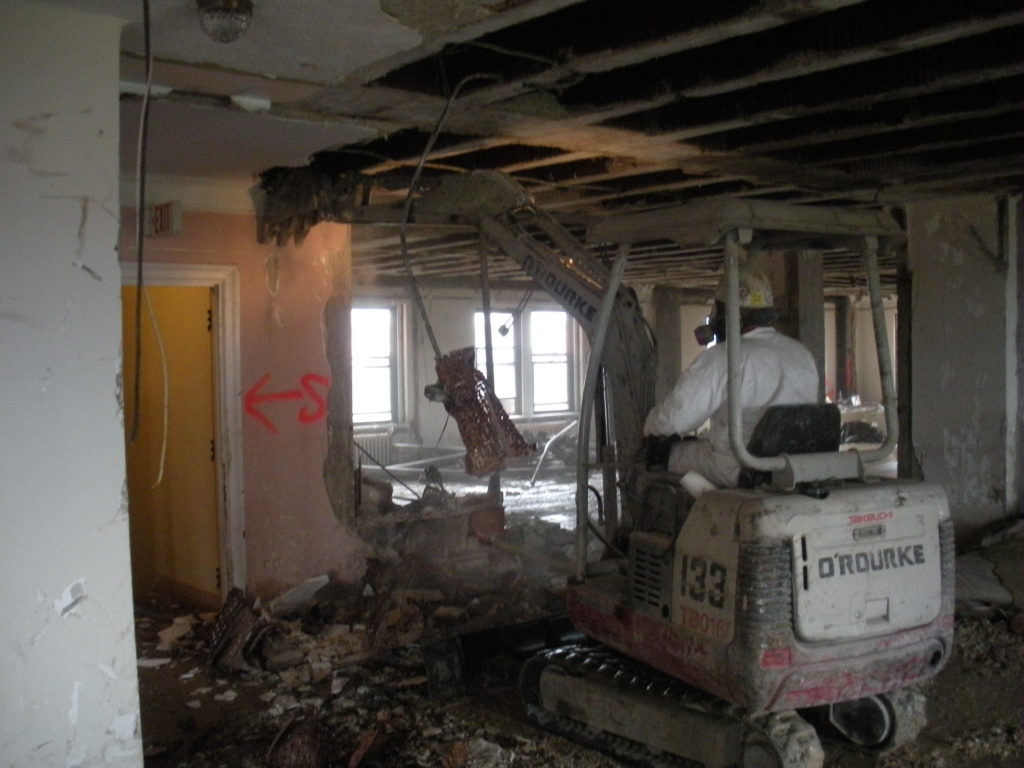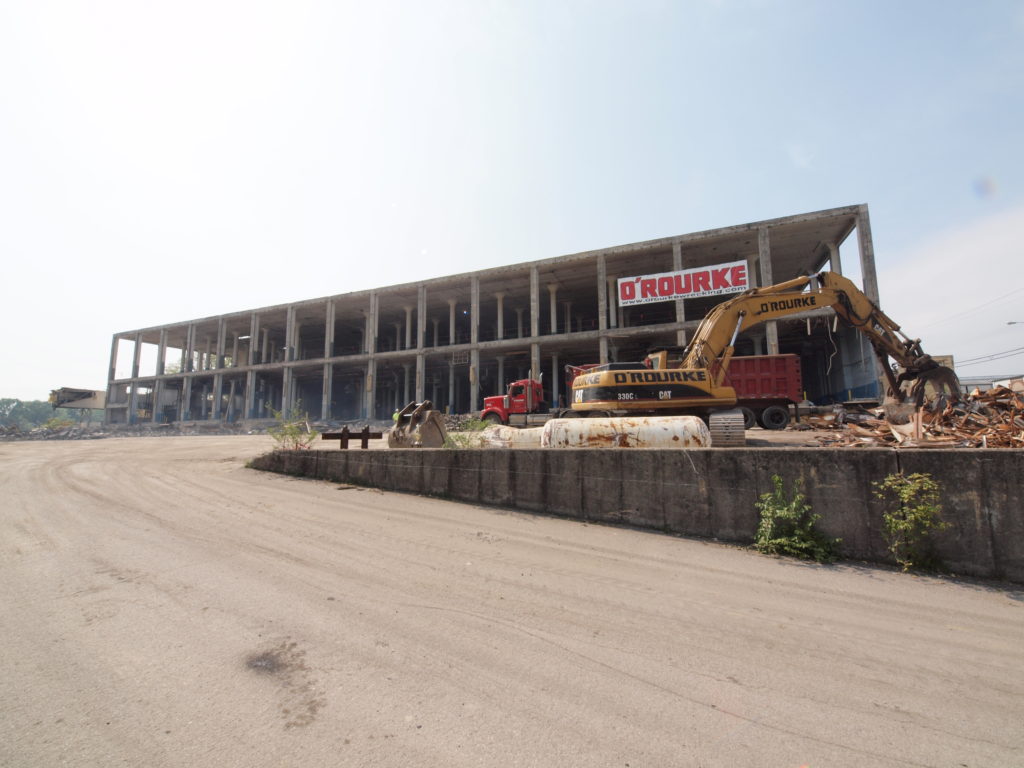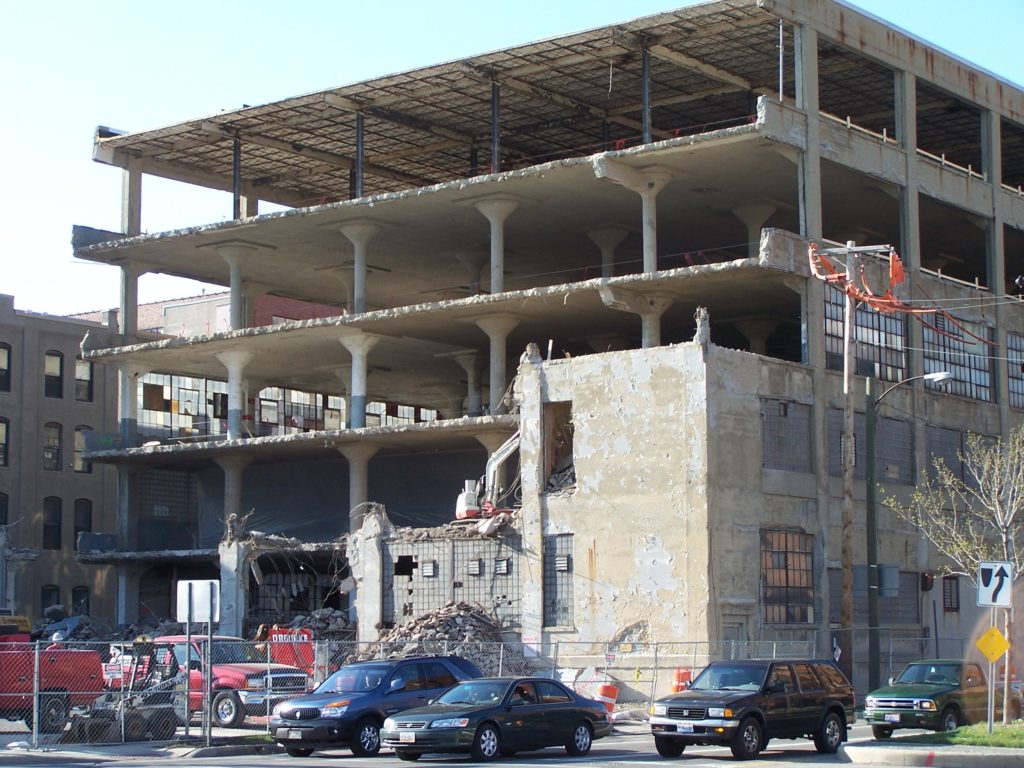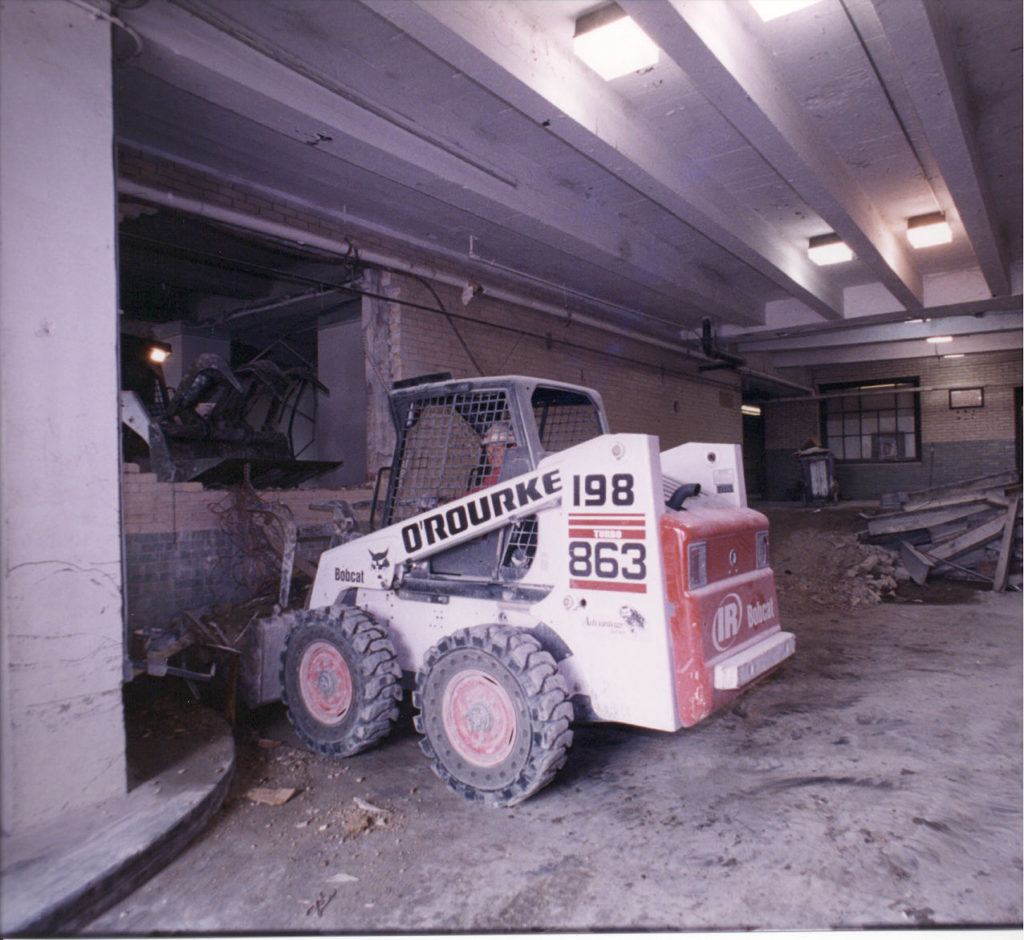For over 60 years, O’ROURKE has been a leader in interior demolition projects. Our highly trained and skilled demolition experts have a track record of completing complex projects in active facilities without interfering with our client’s operations.
We have the expertise and experience to handle any interior demolition project, no matter how complex. Every project is distinct and necessitates a different solution. O’ROURKE will work with you to develop a site-specific demolition and safety plan to meet your specific needs and objectives. Whether it’s the interior demolition of an entire building or just a portion, we will get the job done right.
O’ROURKE’s Interior Demolition Services
Interior demolition requires experienced professionals to ensure workers’ safety and the building’s integrity. O’ROURKE can help you make the most of your investment if you want to renovate or expand your space. Our team of experts will work with you to develop a plan that meets your specific needs and budget. Below are some of the services that we perform for interior demolition:
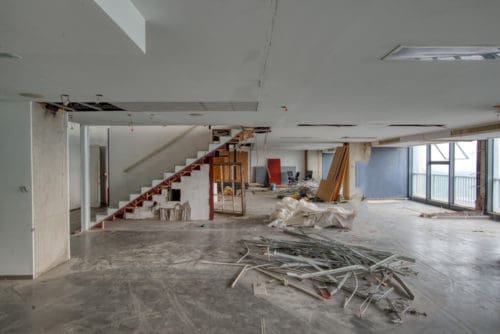 Complete removal of all interior walls, partitions, and ceilings
Complete removal of all interior walls, partitions, and ceilings - Flooring removal (including carpet, vinyl flooring, tile flooring, concrete, and hardwood floors)
- Demolition of all fixtures, cabinets, and countertops
- Removal of all wiring, electrical, mechanical, and plumbing systems
- Removal and disposal of hazardous materials
- Preparation for new construction within the existing structure
- Deconstruction for salvage, asset recovery, and disposal of debris
Specialists in Demolition For Commercial and Industrial Buildings
O’ROURKE specializes in commercial and industrial demolition projects, having completed thousands of jobs at sites across the country. Interior demolition is often the first step in these large renovation and restoration projects, with many types of businesses utilizing our services to prepare the property for new tenants or new usage:
- Commercial Buildings (retail, office space, etc.)
- Industrial Buildings (warehouses, manufacturing plants, etc.)
- Medical Facilities (hospitals, pharmaceutical plants, etc.)
- Academic Institutions (schools and universities)
- Residential (condominiums and apartment buildings)
O’ROURKE’s Interior Demolition Specialists have decades of experience completing complex interior demolition projects. Over the last 60 years in business, we have established processes to maximize efficiency, while always keeping an eye out for innovations in our industry. You can expect experienced, professional contractors and top-of-the-line construction equipment when you hire us. We will get your job done right the first time.
Why Hire O'ROURKE For Your Interior Demo Project?
For over 60 years, O’ROURKE has provided top-quality interior demolition services to our clients throughout the country. We are fully licensed, insured, and bonded. Our highly trained team of professionals has the expertise and experience to handle even the most challenging demolition projects.
O’ROURKE is committed to providing the highest level of customer service and satisfaction. We have the knowledge and expertise to safely and efficiently handle any interior demolition project, from small office spaces to large industrial complexes.
Whether partially demolishing an old office or tearing down an entire office building, O’ROURKE is the company you can trust to get the job done right. We understand the importance of minimizing disruptions and maximizing safety, and our highly trained team has the experience and expertise to get the job done quickly and efficiently.

